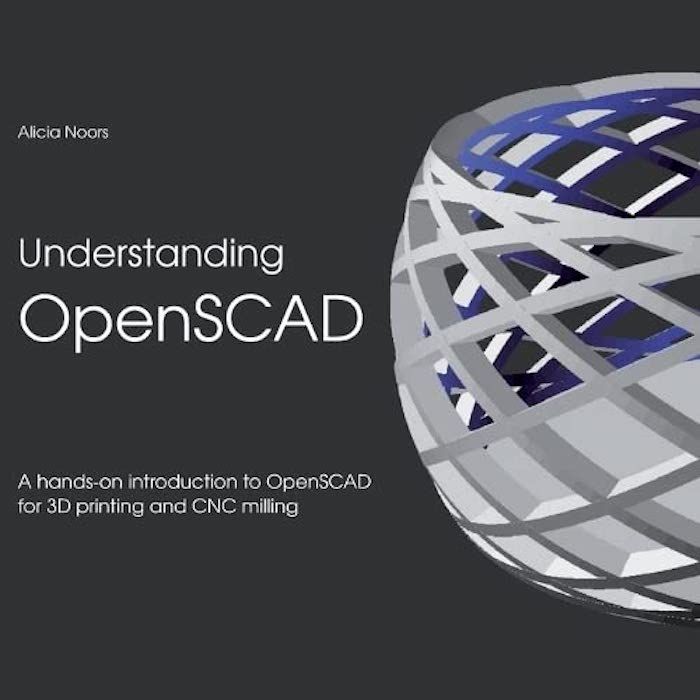
This week’s selection is “Understanding OpenSCAD: A hands-on introduction to OpenSCAD for 3D printing and CNC milling” by Alicia Doors.
OpenSCAD is one of the most unique systems for creating 3D models for printing, but it’s not for everyone.
Most 3D creative tools use a WYSIWYG style, where you’re moving basic 3D shapes around to build more complex objects. More advanced tools involve sketching and extruding, but again that’s a more visual approach.
OpenSCAD is very different. Instead of moving shapes around, you write a program — software!
OpenSCAD is actually a formal computer language with a number of functions that generate 3D geometry. An OpenSCAD program consists of statements that are sequentially executed, each adding something to the growing 3D shape.
For those with existing programming skills, using OpenSCAD is simply a matter of understanding the functions and writing code. For those without programming experience, there’s this book.
Doors walks you through the entire lifecycle of using OpenSCAD, including how to find, download and install the OpenSCAD software. By the way, I should mention that OpenSCAD is open source and free for use by anyone.
Doors explains the nature of the OpenSCAD user interface, which is a bit different from typical 3D editing tools. You’re presented with a code window and an execution window where the results of your OpenSCAD program are displayed, for good or bad as you develop the code.
One interesting feature of the book is a section explaining typical issues encountered by those new to OpenSCAD, including calculation errors, syntax troubles and rendering.
Much of the book is taken up with explanations of the various OpenSCAD functions and typical processes used to create more complex geometries.
There’s several sections related to logic, where you can create programming loops, modules and other features found in programs. These can be used in OpenSCAD to generate incredibly complex shapes if done properly.
Attention is paid to both importing objects from outside OpenSCAD, as well as exporting results from OpenSCAD into other CAD systems, something I haven’t seen in many OpenSCAD books.
Finally, Noors takes the reader through the entire design and making workflow from start to finish, which includes both 3D printing and CNC milling operations.
The book is beautifully laid out with plenty of images. If you’re interested in OpenSCAD, this could be the book for you.
We’re an Amazon Associate and earn a small fee from qualifying purchases. Help support our 3D print news service by checking out this book!
Via Amazon
